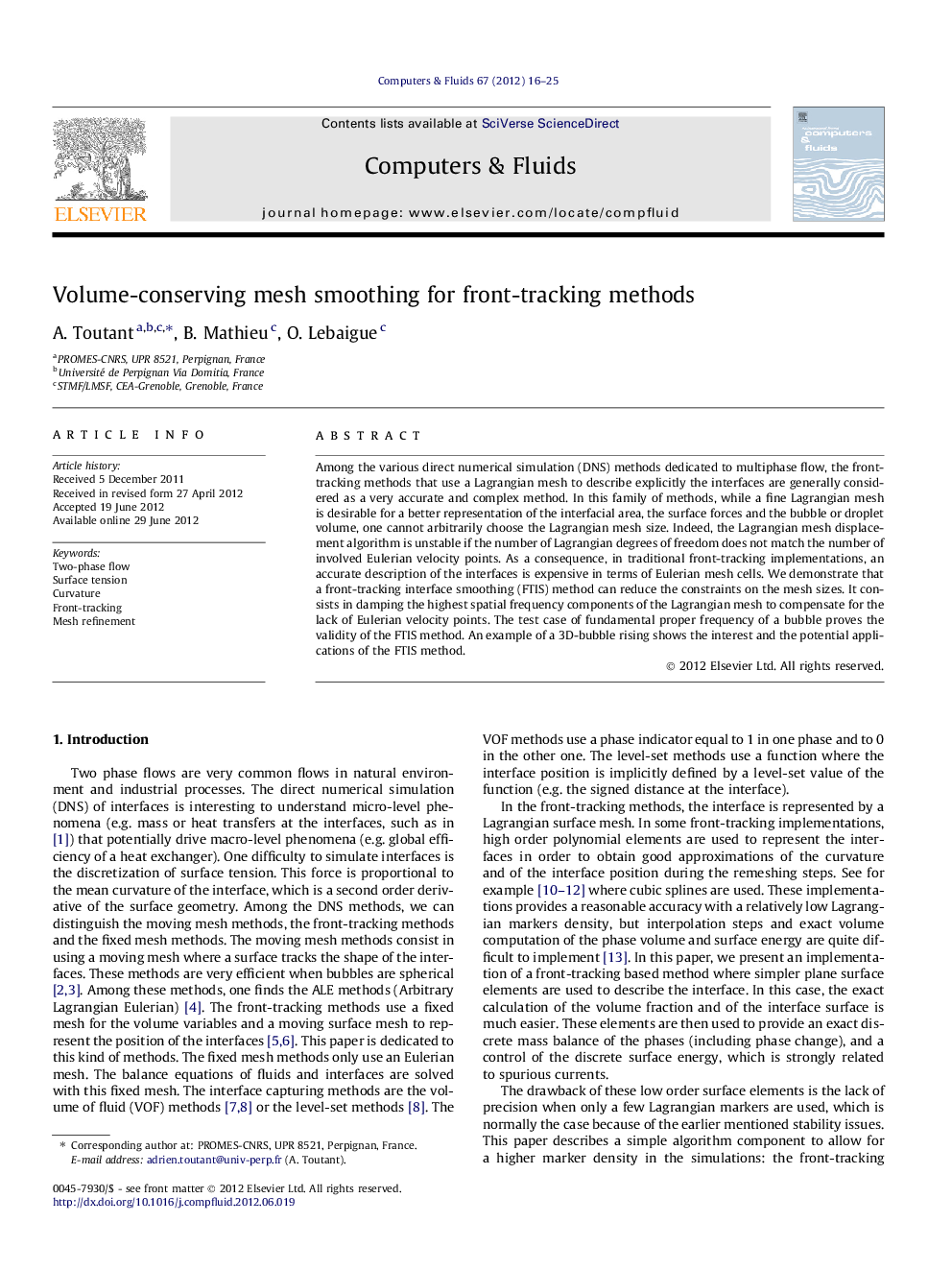| Article ID | Journal | Published Year | Pages | File Type |
|---|---|---|---|---|
| 762086 | Computers & Fluids | 2012 | 10 Pages |
Among the various direct numerical simulation (DNS) methods dedicated to multiphase flow, the front-tracking methods that use a Lagrangian mesh to describe explicitly the interfaces are generally considered as a very accurate and complex method. In this family of methods, while a fine Lagrangian mesh is desirable for a better representation of the interfacial area, the surface forces and the bubble or droplet volume, one cannot arbitrarily choose the Lagrangian mesh size. Indeed, the Lagrangian mesh displacement algorithm is unstable if the number of Lagrangian degrees of freedom does not match the number of involved Eulerian velocity points. As a consequence, in traditional front-tracking implementations, an accurate description of the interfaces is expensive in terms of Eulerian mesh cells. We demonstrate that a front-tracking interface smoothing (FTIS) method can reduce the constraints on the mesh sizes. It consists in damping the highest spatial frequency components of the Lagrangian mesh to compensate for the lack of Eulerian velocity points. The test case of fundamental proper frequency of a bubble proves the validity of the FTIS method. An example of a 3D-bubble rising shows the interest and the potential applications of the FTIS method.
► Proposition of a front-tracking interface smoothing (FTIS) method. ► Description of the properties of the algorithm. ► Theoretical demonstration of the FTIS potential. ► Practical validation of the FTIS implementation.
